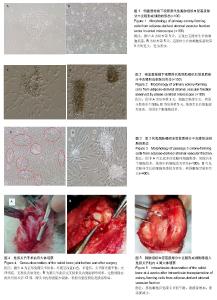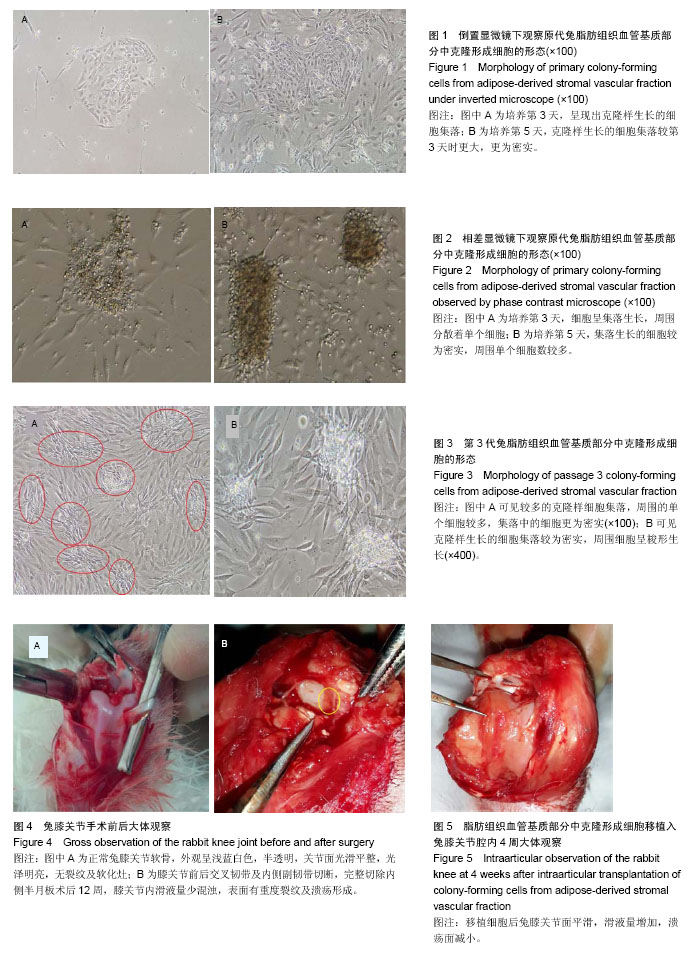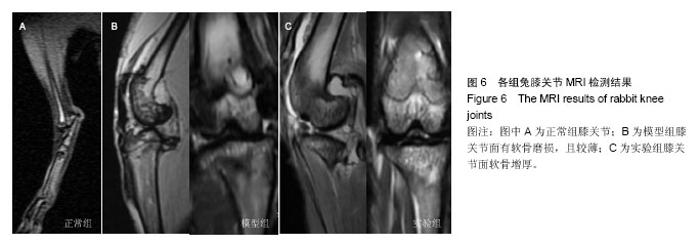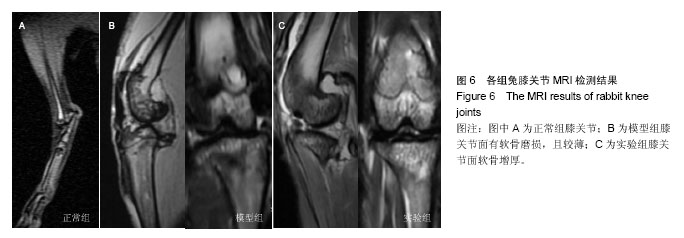| [1] Lawrence RC, Felson DT, Helmick CG, et al. Estimates of the prevalence of arthritis and other rheumatic conditions in the United States. Part II. Arthritis Rheum. 2008;58(1):26-35.
[2] Hunziker EB. Articular cartilage repair: basic science and clinical progress. A review of the current status and prospects. Osteoarthritis Cartilage. 2002;10(6):432-463.
[3] Lee CR, Grodzinsky AJ, Hsu HP, et al. Effects of harvest and selected cartilage repair procedures on the physical and biochemical properties of articular cartilage in the canine knee. J Orthop Res. 2000;18(5):790-799.
[4] 张荣耀,毕晓娟,马艳,等.全骨髓法培养C57小鼠骨髓间充质干细胞的生物学特性[J].中国组织工程研究,2014,18(1):45-50.
[5] 宋丽娟,毕晓娟,马艳,等.小鼠脂肪源干细胞的生物学特性及增殖特点[J].新疆医科大学学报,2013,36(4):479-483.
[6] 邢昕,吕蓉,李素萍,刘忠,等.体外分离培养人源性脂肪间充质干细胞及其鉴定[J].中国输血杂志,2013,26(8):708-712.
[7] 侯晓琳,郁卫东,崔梅花,等.小鼠脂肪间充质干细胞的分离培养及肠道归巢[J].中国组织工程研究,2015,19(6):854-860.
[8] 吕品雷,苏约翰,崔大祥,等.荧光磁性纳米粒子标记三维培养系统中的脂肪间充质干细胞[J].中国组织工程研究,2015,19(1):44-48.
[9] Kassem M, Kristiansen M, Abdallah BM. Mesenchymal stem cells: cell biology and potential use in therapy. Basic Clin Pharmacol Toxicol. 2004;95(5):209-214.
[10] 吴清法,王立生,吴祖泽.间充质干细胞的来源及临床应用[J].军事医学科学院院刊, 2002,26(3):213-217.
[11] 文铁,刘玲,吕国华,等.年龄对人骨髓间充质干细胞体外生长与衰老的影响[J].中国组织工程研究与临床康复,2009,13(32): 6243-6248.
[12] Strem BM, Hicok KC, Zhu M, et al. Multipotential differentiation of adipose tissue-derived stem cells. Keio J Med. 2005;54(3):132-141.
[13] Taha MF, Hedayati V. Isolation, identification and multipotential differentiation of mouse adipose tissue-derived stem cells. Tissue Cell. 2010;42(4):211-216.
[14] Kang BJ, Ryu HH, Park SS, et al. Comparing the osteogenic potential of canine mesenchymal stem cells derived from adipose tissues, bone marrow, umbilical cord blood, and Wharton's jelly for treating bone defects. J Vet Sci. 2012;13(3): 299-310.
[15] 苏约翰,卫超,吕品雷,等.利用细胞外基质大规模扩增临床级人脂肪间充质干细胞[J].中国组织工程研究,2014,18(10):1521- 1531.
[16] 翟吉良,翁习生,邱贵兴.骨关节炎动物模型的建立及选择[J].中国矫形外科杂志, 2007,15(11):843-845.
[17] 金刚.骨关节炎动物模型研究进展[J].中国民族民间医药, 2014, 23(13):24,26.
[18] 刘献祥,李西海,周江涛.改良Hulth造模法复制膝骨性关节炎的实验研究[J].中国中西医结合杂志, 2005, 25(12):1104-1108.
[19] 詹楚宁,付拴虎,程俊,等.骨关节炎实验动物模型研究进展[J]. 大众科技, 2013,15(12):121-123.
[20] Ferrari G, Cusella-De Angelis G, Coletta M, et al. Muscle regeneration by bone marrow-derived myogenic progenitors. Science. 1998;279(5356):1528-1530.
[21] Dennis JE, Merriam A, Awadallah A, et al. A quadripotential mesenchymal progenitor cell isolated from the marrow of an adult mouse. J Bone Miner Res. 1999;14(5):700-709.
[22] Pittenger MF, Mackay AM, Beck SC, et al. Multilineage potential of adult human mesenchymal stem cells. Science. 1999;284(5411):143-147.
[23] Smith JR, Pochampally R, Perry A, et al. Isolation of a highly clonogenic and multipotential subfraction of adult stem cells from bone marrow stroma. Stem Cells. 2004;22(5):823-831.
[24] Deng J, Petersen BE, Steindler DA, et al. Mesenchymal stem cells spontaneously express neural proteins in culture and are neurogenic after transplantation. Stem Cells. 2006;24(4): 1054-1064.
[25] Engler AJ, Sen S, Sweeney HL, et al. Matrix elasticity directs stem cell lineage specification. Cell. 2006;126(4):677-689.
[26] Petersen BE, Bowen WC, Patrene KD, et al. Bone marrow as a potential source of hepatic oval cells. Science. 19994;284 (5417):1168-1170.
[27] Zuk PA, Zhu M, Mizuno H, et al. Multilineage cells from human adipose tissue: implications for cell-based therapies. Tissue Eng. 2001;7(2):211-228.
[28] Okura H, Saga A, Fumimoto Y, et al. Transplantation of human adipose tissue-derived multilineage progenitor cells reduces serum cholesterol in hyperlipidemic Watanabe rabbits. Tissue Eng Part C Methods. 2011;17(2):145-154.
[29] Banas A, Teratani T, Yamamoto Y, et al. Adipose tissue-derived mesenchymal stem cells as a source of human hepatocytes. Hepatology. 2007;46(1):219-228.
[30] Williams AR, Hare JM. Mesenchymal stem cells: biology, pathophysiology, translational findings, and therapeutic implications for cardiac disease. Circ Res. 2011;109(8): 923-940.
[31] Chung DJ, Hayashi K, Toupadakis CA, et al. Osteogenic proliferation and differentiation of canine bone marrow and adipose tissue derived mesenchymal stromal cells and the influence of hypoxia. Res Vet Sci. 2012;92(1):66-75.
[32] Spencer ND, Chun R, Vidal MA, et al. In vitro expansion and differentiation of fresh and revitalized adult canine bone marrow-derived and adipose tissue-derived stromal cells. Vet J. 2012;191(2):231-239.
[33] Reich CM, Raabe O, Wenisch S, et al. Isolation, culture and chondrogenic differentiation of canine adipose tissue- and bone marrow-derived mesenchymal stem cells--a comparative study. Vet Res Commun. 2012;36(2):139-148.
[34] Kang BJ, Lee SH, Kweon OK, et al. Differentiation of canine adipose tissue-derived mesenchymal stem cells towards endothelial progenitor cells. Am J Vet Res. 2014;75(7): 685-691.
[35] Wang QZ,Zhou LL,Guo Y,et al.Differentiation of human adipose-derived stem cells into neuron-like cells by Radix Angelicae Sinensis.Neural Regen Res. 2013;8 (35): 3353-3358.
[36] Prockop DJ. Repair of tissues by adult stem/progenitor cells (MSCs): controversies, myths, and changing paradigms. Mol Ther. 2009;17(6):939-946.
[37] 韩爽,卢世璧,刘强,等.自体脂肪间充质干细胞复合人脐带Wharton胶支架修复兔膝关节软骨缺损[J].中国组织工程研究, 2012,16(19):3496-3501.
[38] Yang YF,Ma T,Gong K,et al.Adipose-derived mesenchymal stem cell transplantation promotes adult neurogenesis in the brains of Alzheimer’s disease mice.Neural Regen Res. 2014; 9(8): 798-805.
[39] Kern S, Eichler H, Stoeve J, et al. Comparative analysis of mesenchymal stem cells from bone marrow, umbilical cord blood, or adipose tissue. Stem Cells. 2006;24(5):1294-1301.
[40] Izadpanah R, Trygg C, Patel B, et al. Biologic properties of mesenchymal stem cells derived from bone marrow and adipose tissue. J Cell Biochem. 2006;99(5):1285-1297. |



